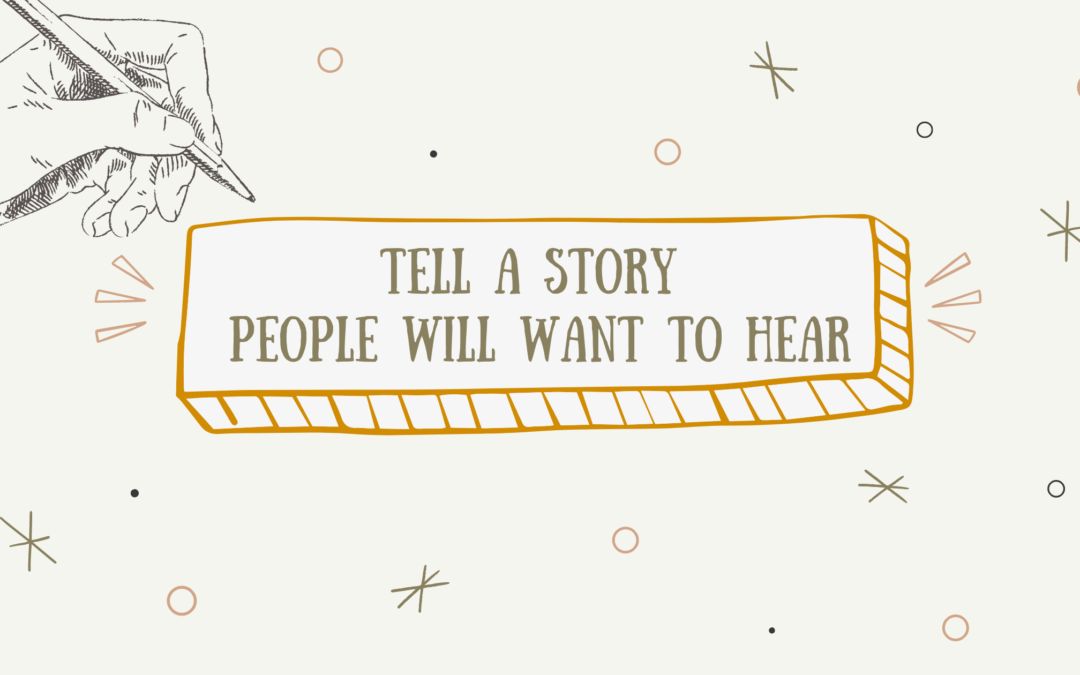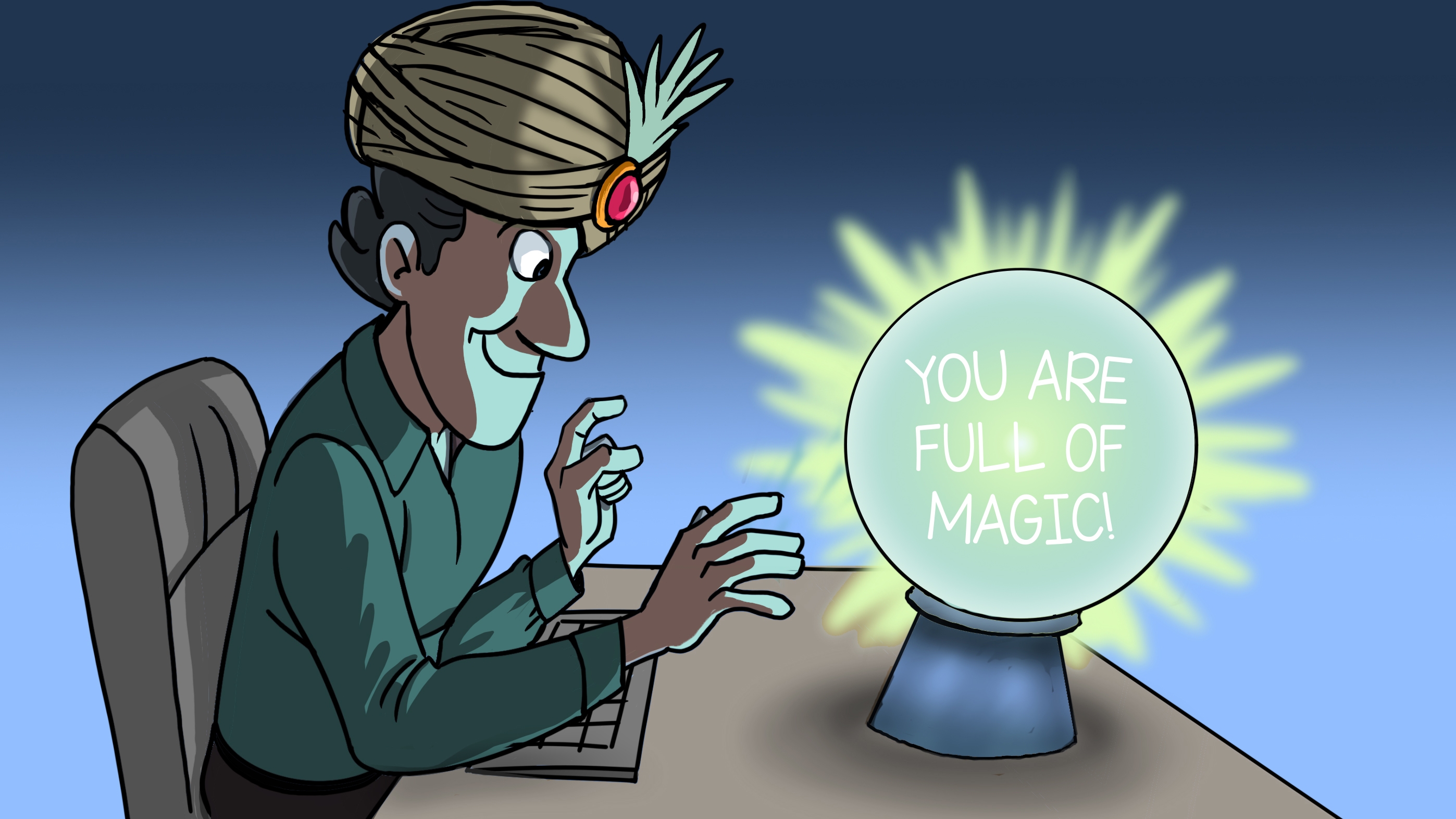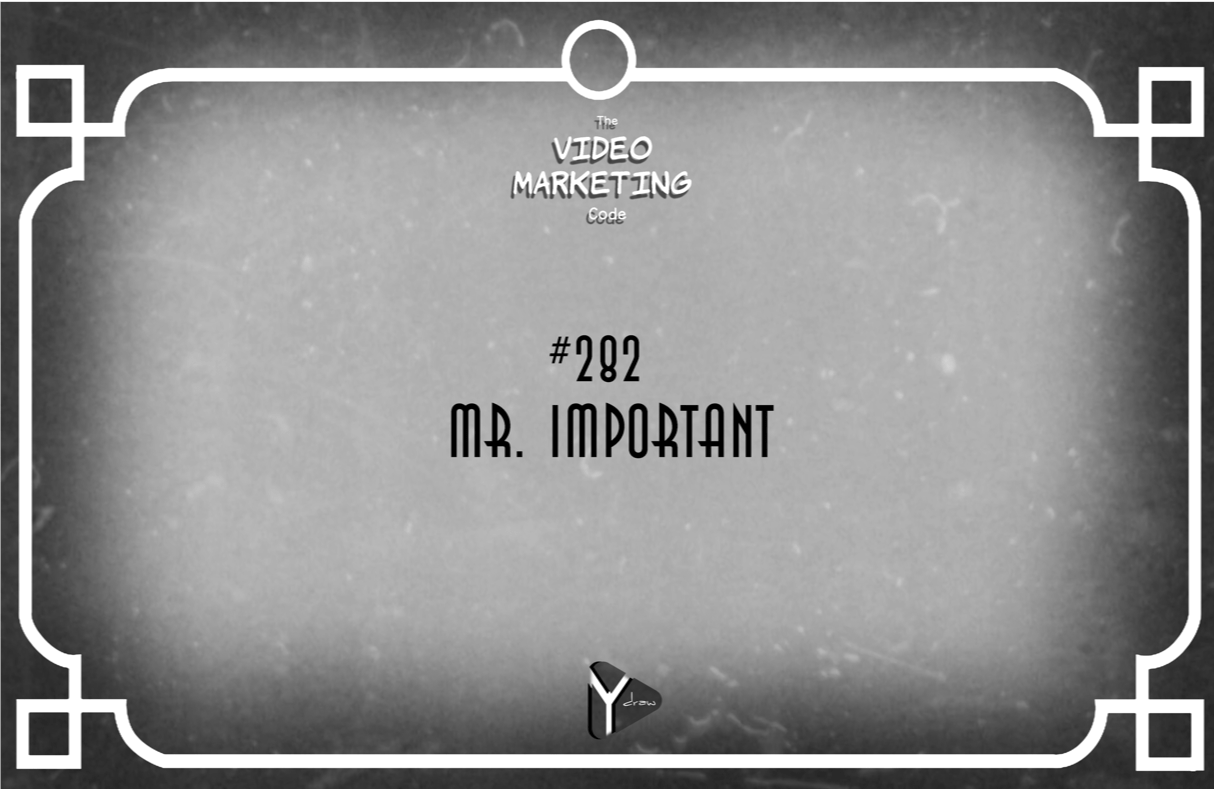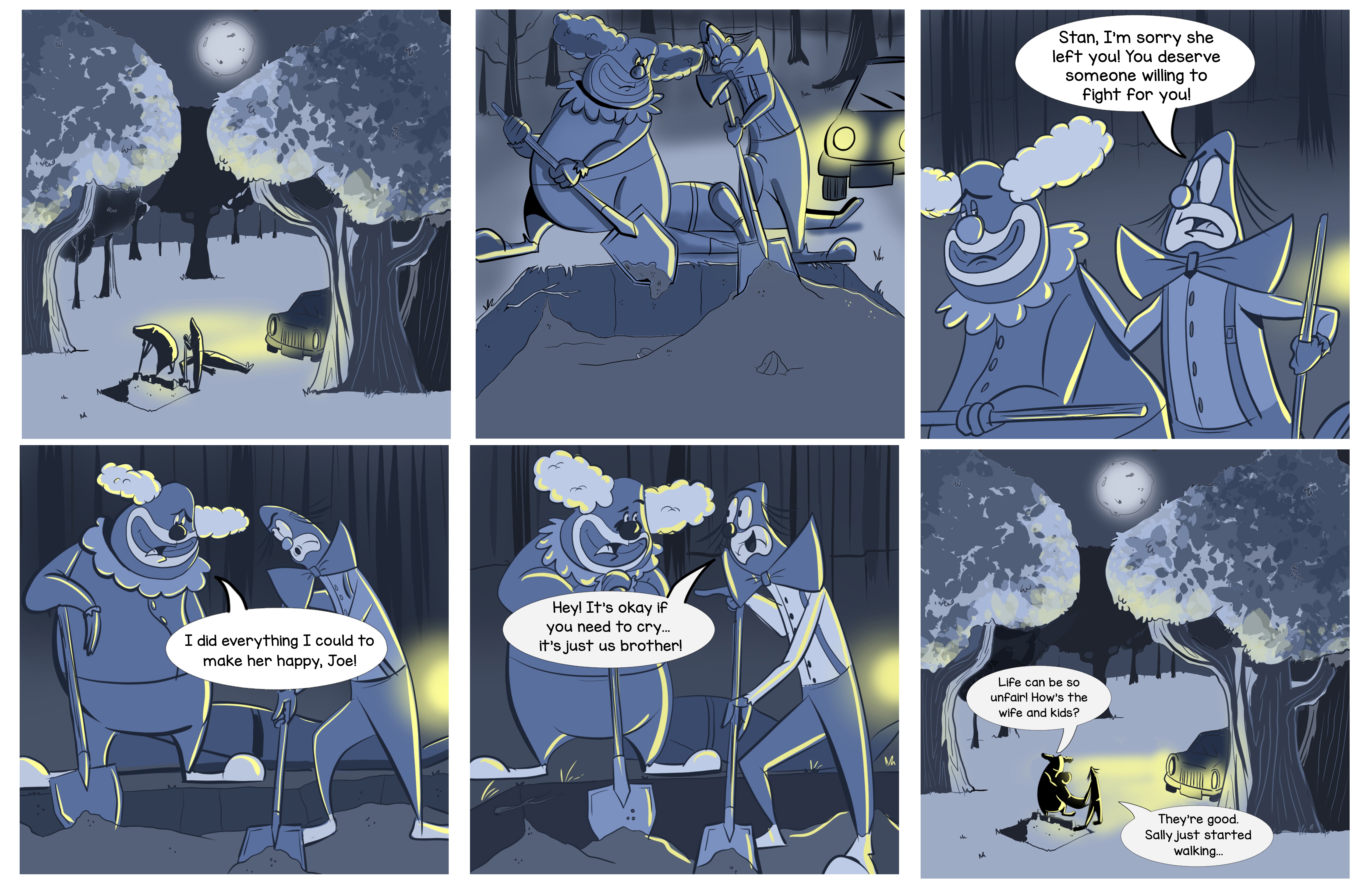
by Jace Vernon | Oct 22, 2021 | Explainer Video, Marketing, Story Telling, Video Marketing
Humans are storytellers. It is one of the oldest traditions we have. Before modern methods of record-keeping, storytelling was how we survived–how we preserved knowledge, taught, and shared memories–and it continues to be one of our primary sources of entertainment. And everyone has a story. Just ask the thousands of people who attend the Scottish International Storytelling Festival every year.
Good marketing strategies make use of stories that will stimulate an emotional response and drive a customer to act, whether that action is signing up, making a purchase, or volunteering. At Ydraw we specialize in telling stories through short animated explainer videos, whiteboard animation, 3D animation, and more. We know we can help you tell your story, but first let me tell you Y.
Y Draw?
Of all the ways to tell a story, drawing might be one of the oldest. Just think about ancient hieroglyphs and cave drawings. That’s how people communicated! If that is not a compelling enough reason, here are a few more.
Say More With Less
Have you ever heard that a picture is worth a thousand words? Well, so have we. That is why we know that animating a short video to tell your story can help you say more in less time. That’s great news considering it only takes about a minute for an audience to stop paying attention. In fact, if you don’t have them locked in after 5 seconds they might just move on, but more on that later. However, with animated videos you are not just getting one picture, you are getting several.
Plus drawing has the potential to break down speech barriers and tell a story even without words. That is how powerful they are. You can maximize the short amount of time you have to get your message across by showing your audience what you are talking about, not just telling them.
Enchant Your Audience
How many of you know someone who will sit there for hours watching 10-second videos on Tik Tok? Their eyes glaze over and they can’t seem to tear themselves away because there is something trance-like about watching those videos. That is how easily you can hypnotize your audience with a simple video.
Whiteboard animation in particular is excellent at captivating an audience from the first frame. This is because the viewer is watching things being drawn right before their eyes. As a result, their whole mind is engaged in the process while they listen to the information being shared and are visually stimulated with constant motion. Much like anticipating the punchline during a comedy routine, the viewer is waiting for the whole picture to be revealed and is held in suspense. When the image is complete there is a sense of relief.
Be Contagious
Videos also have a high chance of going viral. In his book, Contagious Jonah Berger talks about “the science behind why things catch on,” and it is full of advice on how to create content that has the potential to ‘go viral.’ The technological age we live in makes it so easy to share a video that they can receive millions of views overnight. So when you have animated explainer videos as part of your marketing strategy you increase shareability and reach a larger audience.
The chances that you will go viral are higher if you have a catchy script and fun artwork. Shakespeare wrote, “the eye of man hath not heard, the ear of man hath not seen…” to describe how our individual senses come together for a more complete experience. Food that looks good, smells good, AND tastes good is way more enjoyable than food that just does one of those things. In the same way, hand-drawn visuals will complement a well-written script to give you that viral effect.
So now you know Y. What about how?
Explainer Video Basics
The most infuriating thing about every tutorial on how to create a great explainer video or how to write a killer ad script is their number one step. Inevitably it will be something like, “start with a great hook.” Yes, that’s swell advice, thanks…now how do I do that? Well, after some research and a bit of trial and error, here are the basics. Some guides may add a bit more fluff, but these points are found in each one.
Create A Fantasy (AKA Tell A Story)
We’ve all seen enough advertisements to know exactly what it sounds like to be sold something. How thoroughly can a teenager tune out an adult or a husband tune out a nagging wife? That is how easily we tune out advertising all the time. Instead of using boring, overdone ad copy, insert your brand/product into the story people are living out every day.
Taking the idea of telling a story one step further, into creating a fantasy, ups the stakes. Most people at a fundamental level are focused on their own survival. Will your brand or product help them get a promotion? Look better to a potential mate? Be healthier or more fit? Show them a fairy tale and position yourself as their guide, helping them look good or accomplish their goals. They will want to buy into whatever you are selling naturally. Create a fantasy they will want to see played out.
Misery Loves Company
Think about every great movie or comic book villain. What are they trying to do? Make everyone else as miserable as they are! Usually, their backstory is some woeful tale about why they are so full of hate, because it is true: misery really does love company. So when it comes to wooing new customers, sympathy goes a long way.
Chances are you already know some key pain points your clients are suffering from. After all, you created a product or service to fix their problem, right? When you start your video by sharing in their distress, you let the viewer know that you understand how they feel. Then you can comfort them with your offer, and empower them to become the hero.
Don’t make that common mistake. In this story, they must be the hero, not you. This will create a more compelling reason for them to interact with your brand.
Include A Call To Action
One thing you should never do when creating video advertising: exclude a call to action. The audience needs to be told how to obtain your offer, and no it is not because they are dumb. Marketing students have been told for years that “people are dumb, and you have to tell them exactly what to do.” Really, it has much more to do with being lazy.
If you have produced a quality video then you’ve sold the audience by the end of it. The viewer knows that they want whatever you are selling, but they want it to be easy to get. If you don’t make it easy to obtain whatever you are offering they will move on. Some kind of click here, buy now, or call today ending to your script is vital. Make it easy for them and they will flock to you.
Yes, of course, it is important to have a hook, but there is no format for how to do that. A great hook depends on your audience and other variables. First, do the groundwork of figuring out what story you want to tell, then trust the process. A hook will come. It should never be the first step or you might just get stuck there.
There Is No I
You probably want one of these videos for yourself right about now, but deciding to create a video like this is a huge undertaking. So, if this all sounds like a pretty tough nut to crack, don’t worry: hiring us gives you a team of people who know what they are doing. When I first started this job, I thought there was no way that I was going to be able to pull it off. My coworkers kept reminding me that I was part of a TEAM and that it would take time to learn everything, but they would help me along the way.
Here is a peek at our process. Right off the bat, we get to work diving into the story that you want to tell and begin scripting your video. You might already have a script you want to work with, but don’t know what to do with it. Our writers will help you spin it into gold. Then we hook you up with the perfect voice actor to bring that script to life. While the voice actor works their magic, our artists will begin illustrating your project and recording it live. Editing comes last. This is when our genius team pieces together the voice-over and the recorded illustrations with a little bit of digital magic to unveil a work of art: your video.
Still not convinced? Check out some of our work and you’ll see what I mean.
by Ydraw | Nov 29, 2018 | animated explainer video, Animated Whiteboard Videos, Explainer Video, explanation animation, Marketing, Story Telling, video, Video Content, Video Marketing, Video Strategy Guide, video style, Voice Over, Whiteboard animation, Whiteboard Video, Writing a Script
What Is Tone and Mood and Why Do They Matter to Your Video?
By Erica Schmidt Jabali
According to a Harvard professor, at least 95% of purchasing decisions are made subconsciously – or based on how we feel. We could be influenced by a brand’s commercial, their marketing, brand packaging, and more.
This means simply giving the facts and figures in your video isn’t enough – you have to strike an emotional chord with your target consumer in order to motivate them to act. (read more here)
This is one reason why we ask in our questionnaire and on our kick-off calls what tone and mood you want in your video.
And, we are usually met with crickets on the other end of the line.
Turns out, for those of us who haven’t been in high school English classes for a long time (okay, a really long time), we might need a little brushing up on our tone and mood skills.
Don’t worry – we got you.
So, sharpen your pencils and sit up straight – because your speed-round refresher course on Tone vs. Mood starts now:
TONE:
Tone is the author’s attitude towards the subject. Remember when your mom used to say, “Don’t you take that tone with me!” Well, she wasn’t wrong – the tone we use in our speech is similar to the tone a piece of writing or voiceover in a video takes.
Here are some examples of videos that use a different tone:
In this video, the client wanted a confident, inspirational, educational tone:
Whereas in this video, the client asked for a relaxed, fun, beachy vibe, so our fan-favorite, chameleon of a voiceover talent, Dawson, actually used a surfer accent to achieve this goal
In this video, we wanted to replicate that infamous movie trailer voice to give it that movie trailer tone:
So, in short, tone is the inflections used by the voiceover in order to communicate how they feel about the subject.
Our VO talents are pros at taking a script and inferring the tone that it is trying to convey.
WHY THIS MATTERS:
You know your target customer better than anyone. You know what they like and don’t like. You know what their interests are, maybe their demographics, and even their buying patterns.
So, how do you think this person wants to be talked to?
Do they want that warm, motherly tone that says, “I’m here for you…”? It might end up sounding a little bit like this:
Do you want a fast-talking, witty, lightning speed commentary like this one?
The tone you choose for your video should be directly related to how your target consumer wants to be talked to.
So, when deciding the tone for your video, consider the following questions:
- What prior marketing campaigns have been the most successful and what tone did they take?
- What type of tone will your target consumer be most responsive to?
- What tone will best represent your vision for your business and how you want to be perceived?
Try to think of three key words to describe this tone.
Excellent. Now that you have your tone figured out, let’s move on to mood:
MOOD:
This is how the viewer will feel after watching your video.
For example, this client focuses on food kits for emergencies:
How did this video make you feel? That’s the mood of the video.
Our goal was to create a feeling of urgency, to make you feel that you need this product in order to be prepared and protect your family.
You need to think about the mood because you want to have that target in mind when writing your video.
For example, if you want your viewer to feel emotionally moved and compelled to act, then you’ll want to write the video with that goal in mind – and anything that does not compliment this mission has to be cut.
Sometimes, it can be painful to make cuts or reduce a video script to get it to a certain time – but if you think about all of your choices through the lens of – what will make my target consumer feel [x, y, z] – then it becomes much easier.
Since we know that people make most of their purchasing decisions based on how the branding or marketing makes them feel- then selecting the most appropriate tone and mood for your video becomes imperative.
WRAP IT UP:
- The tone is the author’s attitude in the video and the tone of the VO and the script writing will communicate this
- The tone creates the mood that your viewer will feel
- With most purchasing decision made based on emotions – how you make your viewer feel is very important
- Consider your target tone and mood carefully when preparing for your kick-off call!
There you have it. Everything you needed to know about tone and mood.
We hope this helps as you prepare for the scripting process. We’re here to help and hope to make the process as easy on you as possible.
Please reach out with any questions. We can’t wait to work with you!
by Ydraw | Oct 30, 2018 | Authenticity, Communication, Story Telling, Video Content, Video Marketing

When talking with a Project Manager or other Creative here at Ydraw, it is important to help us understand exactly what your company wants.
Otherwise, how can we blow your mind with incredibly awesome and mystical videos?
One of our favorite things is getting to work with heaps of companies with unique brands and differing requests. Unfortunately, working with a wide range of opinions can make it difficult for our team to pinpoint your companies wishes.
It’s true…we are made of stardust and wishes and magical things, but let me tell you a secret…we can’t actually read minds.
I know, weird right?
For years, we have been diligently looking for a mind-reading crystal ball and unfortunately haven’t found one yet. But…we haven’t given up hope just yet, so we will let you know when that happens!
Until then…
It’s important that we continue to ask lots of questions and paramount that you and your team clearly communicate your wishes.
If you don’t know what you want, and we don’t know what you want, we’re just shooting in the dark. And although our accuracy is near perfect… we aren’t quite there yet.
Listen, we do this all day every day, so trust us when we say we don’t get our feelings hurt. We love working with diverse companies and that is why we have made our process collaborative and flexible.
So be raw, be truthful and communicate clearly.
By the way…
We are POSITIVE that if we did have a crystal ball, it would tell us that YOU ARE FULL OF MAGIC!!
by Ydraw | Sep 18, 2018 | Creative Marketing, how to make a whiteboard animation, Simple marketing, Story Telling, Video Content, Video Marketing, Video Strategy Guide, Whiteboard animation, Whiteboard Video, Writing a Script, Ydraw
Here at Ydraw, we work with amazing people every day, from all over the world, to create awesome videos.
Our completely custom videos are perfect for companies, because we can create EXACTLY what they need. From the scripting, to the choice of art style, to your voiceover selection, to our custom music composer, everything is tailored to our customer’s needs.
Since each video is entirely unique, it requires both parties to be equally invested and provide timely feedback. COLLABORATION IS KEY! This can be both a blessing and a curse.
One of the biggest challenges we run into when creating videos is understanding each parties’ roles in the project. We rely on the client to provide the information needed for us to understand their product or service, and in return, ask our clients to trust us when it comes to creating the best content for them.
Sometimes clients will focus in on one minor detail that has little or no impact on the overall messaging of the video, and can eventually lead to an experience or end product that isn’t so spectacular.
For instance, have you ever looked at a word so many times that you convince yourself it’s spelled wrong? The more your stare at it, the weirder it looks… even though it was right from the beginning. This can happen when creating content.
When creating videos, we notice this problem in the artwork phase. For example, a client will get so hung up on the color of “Mary’s shirt”, and before you know it, they’ve convinced themselves that their ENTIRE video is a failure, because absolutely NO ONE is going to understand or even watch the video, if her shirt is red, and NOT blue…

Sounds dramatic… but we see examples like this happen with our clients often.
We completely understand that these projects, these videos, are as important as your first born child! You have a lot of pressure to produce an amazing product, but it’s imperative to remember to step back and focus on the overall message of your video.
So if the color of Mary’s shirt isn’t the most important part to creating a successful video… then what is?
The message!
First, you want to establish your message. Keep it clear and concise! Second, ensure that your content helps to portray that message.
Don’t know where to start? The good news is that Ydraw can do it all for you!
(and don’t worry.. if you want Mary’s shirt to be blue, we’ll make sure it’s the prettiest blue you’ve ever seen.)
by Ydraw | Aug 27, 2018 | Creative Marketing, Emotional Connection, Explainer Video, how to make a whiteboard animation, Marketing, Memory, Simple marketing, Story Telling, video, Video Content, Video Marketing, video online marketing, Video Strategy Guide, Whiteboard animation, Whiteboard Video, Writing a Script, Ydraw

“Hello, my name is Mr. Important the CEO of Important Products… but the true important person is you!”
Uh wrong… Can you believe this guy?
He has officially lost us within the first line.
Code #282: If you want your audience to believe your product is important… focus on them and their needs, not on yourself.
This code is very important when creating successful content.
Don’t be Mr. Important.
by Ydraw | Jul 18, 2018 | animated doodle videos, animated doodle videos, animated explainer video, Animated Whiteboard Videos, animation, Animation Production, Animation Video, Authenticity, Creative Marketing, Emotional Connection, how to make a whiteboard animation, Humor, Marketing, Story Telling, Video Content, Video Marketing, video online marketing, Whiteboard animation, Whiteboard Video, Ydraw
What makes things funny? Our own sense of humor isn’t always funny to the guy sitting next to us. So, let’s look at a few simple principles used in Improv to make your video funny to all of your audience!
First and foremost, there is TRUTH in COMEDY! The funny comes from the experiences we have all had in our lives. Think about sitcoms, why do they work? They take something so simple, like everyday life and exploit it. The ups and downs of dating and heartbreak or fighting for that perfect job, only to find out that it isn’t so perfect. But where does the comedy come from?
The funny comes from the unexpected. The moments of truth. It comes from showing not telling. We have all been there…the time in the grocery store when two people are having a conversation in public and you can’t help but listen, even though you know the topic should have probably been left at home…yeah that stuff.
So let’s take a look at this funny scenario….
We see two shadowy figures digging holes in a graveyard. It’s dark, but we can see that there’s a body behind them. It appears that they are covering up a murder! The scene is quite grim and creepy… so how is this funny? The car lights flicker on and we get a better look of the situation… only to reveal…two clowns? Okay, now this is way more terrifying, but their must be more to the story… so as we get closer, we overhear…
Clown 1:“Look Stan, all I’m saying is I’m sorry she left you. You deserve better!”
Clown 2:“You know Joe I just don’t understand, I did everything I could to make her happy.”
Clown 1:“Hey, you know, it’s okay if you want to cry. It’s just us brother.”
Clown 2: (in tears) “Life is just so unfair! But hey how’s the wife and kids?”
Clown 1: “They’re real good. Sally just started walking…”

The conversation continues as they are digging a shallow grave wearing their clown costumes. So, we know they are clowns, we know they are friends, and we know what happened…but they don’t have to tell us that they murdered this guy. We just know! If we focused on the body, or what happened the scene would drag on, the audience would get board with details and information that they don’t need.
This scenario leads us to the truth of comedy…Relatability!
Think about how you feel when you pop bubble wrap. Did that put a smile on your face just thinking about it? How about when you scoop peanut butter from a freshly open jar, yeah there’s that satisfaction face. See how easy it is to relate? All you have to do is capture a moment when someone has used your product in such a way that it brings a clear feeling to your audience.
Just remember that comedy is subjective, but so is being bored out of your seat. By using these tried and true principles of Improv Comedy, you can help your audience laugh at the unexpected, learn about your great product/service and keep them interested and wanting more.
So, let’s get out there and take a fresh approach to comedy, and whatever you do, if you see two clowns walking your way…RUN!




